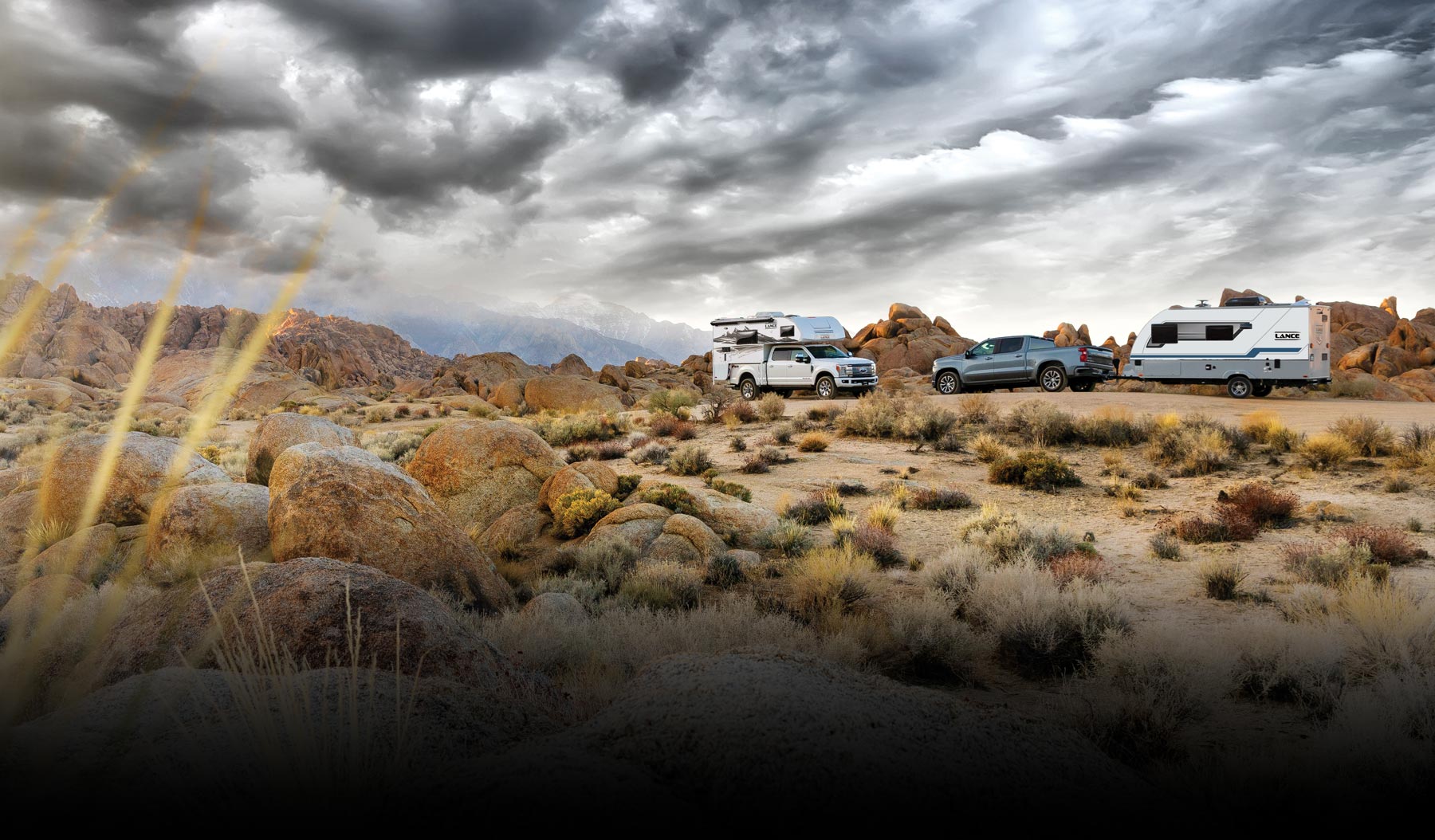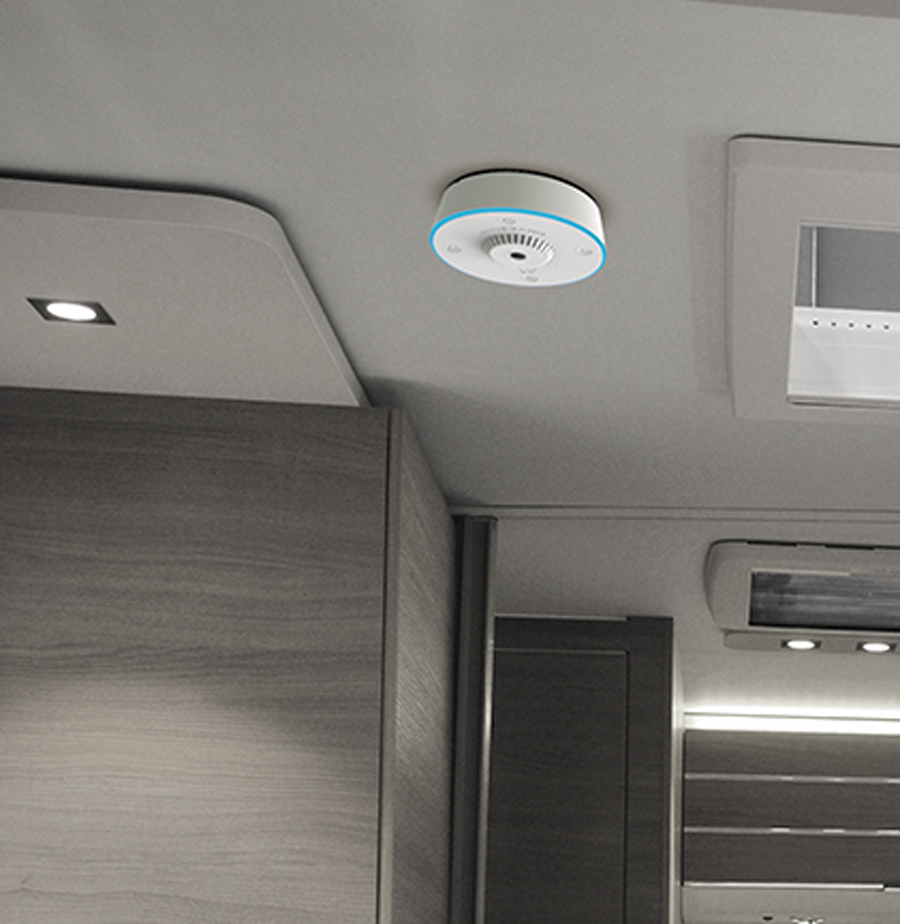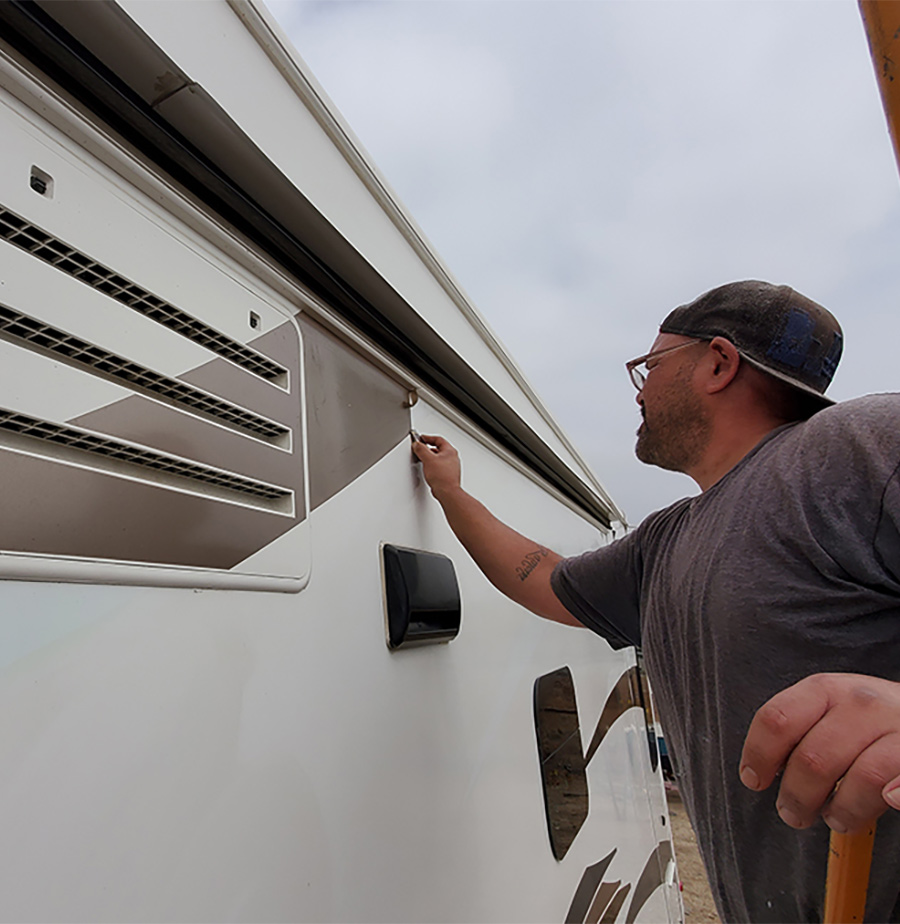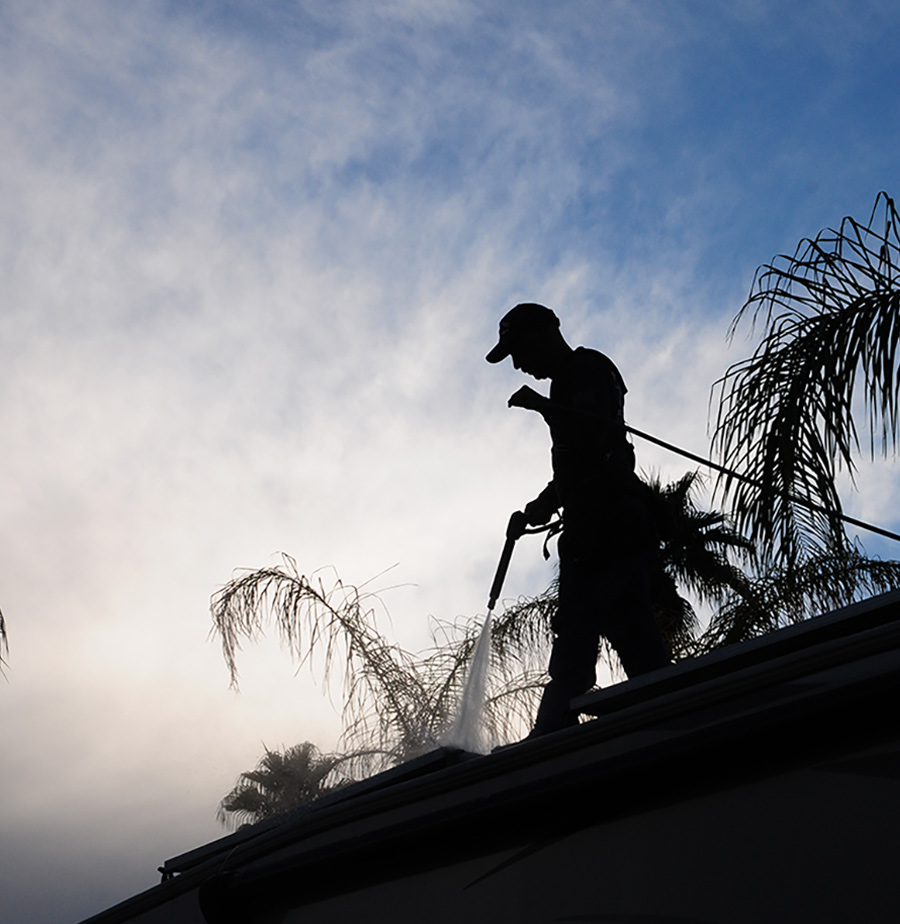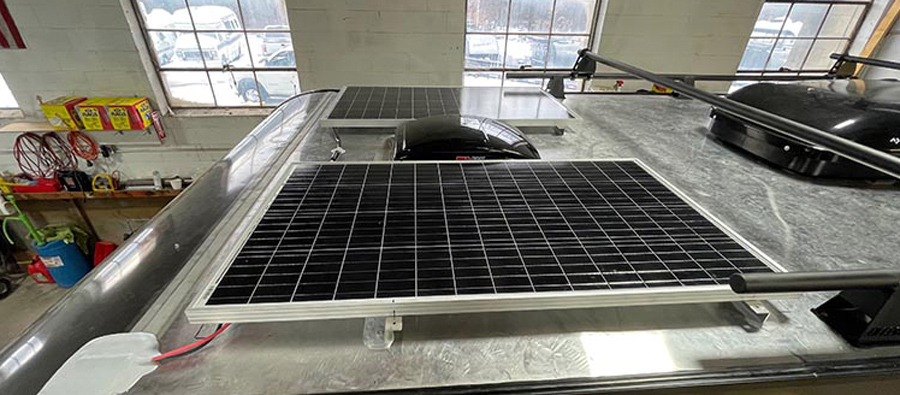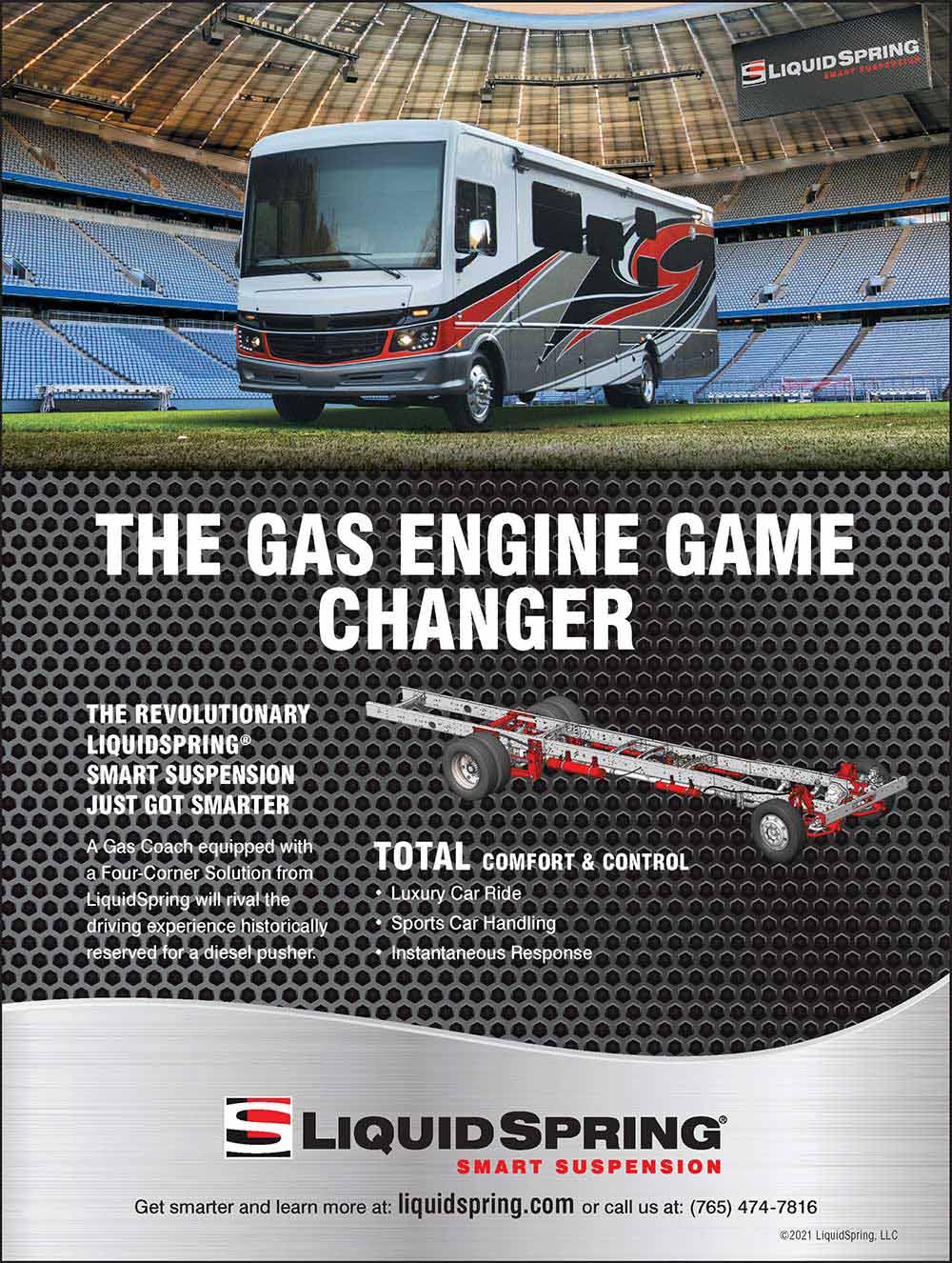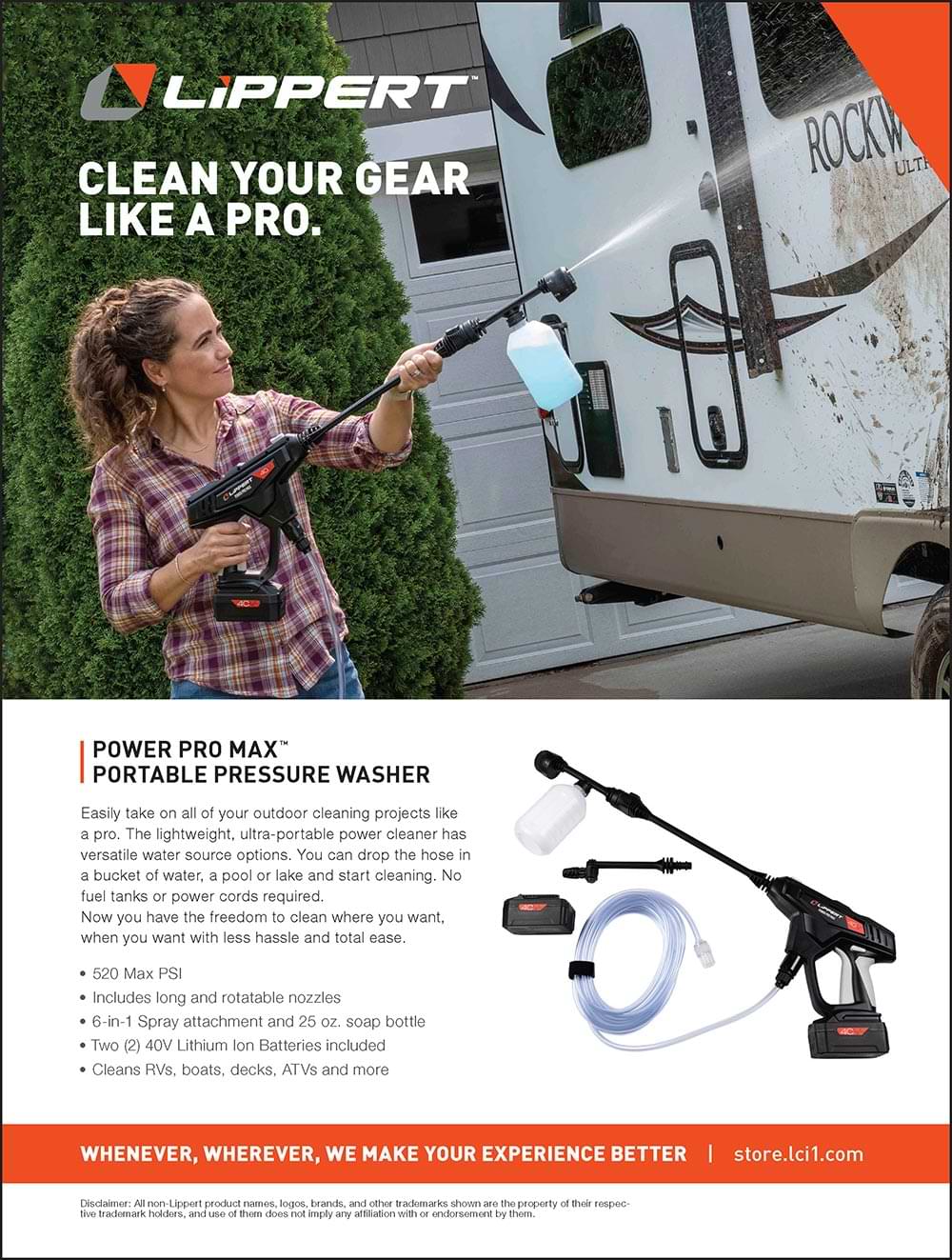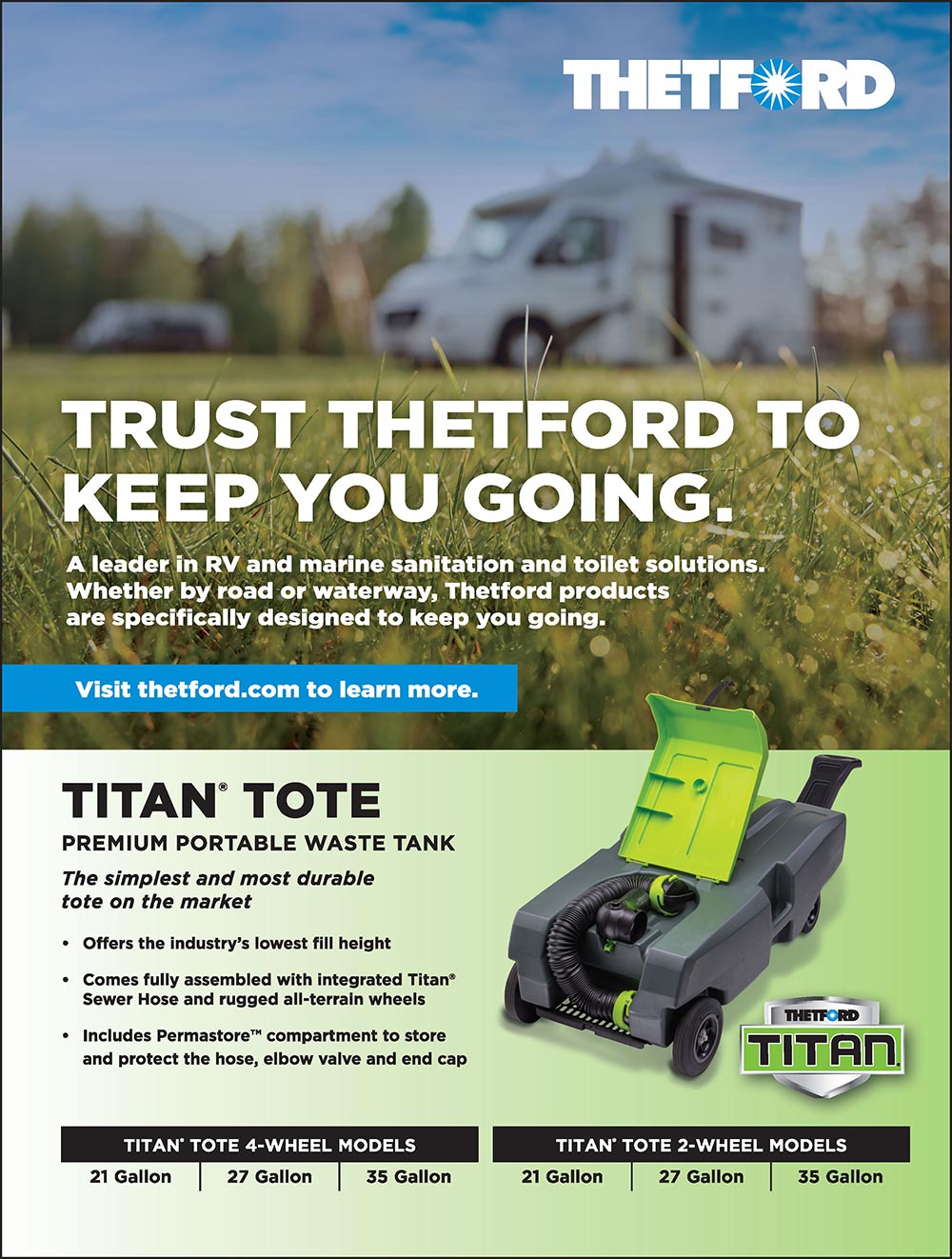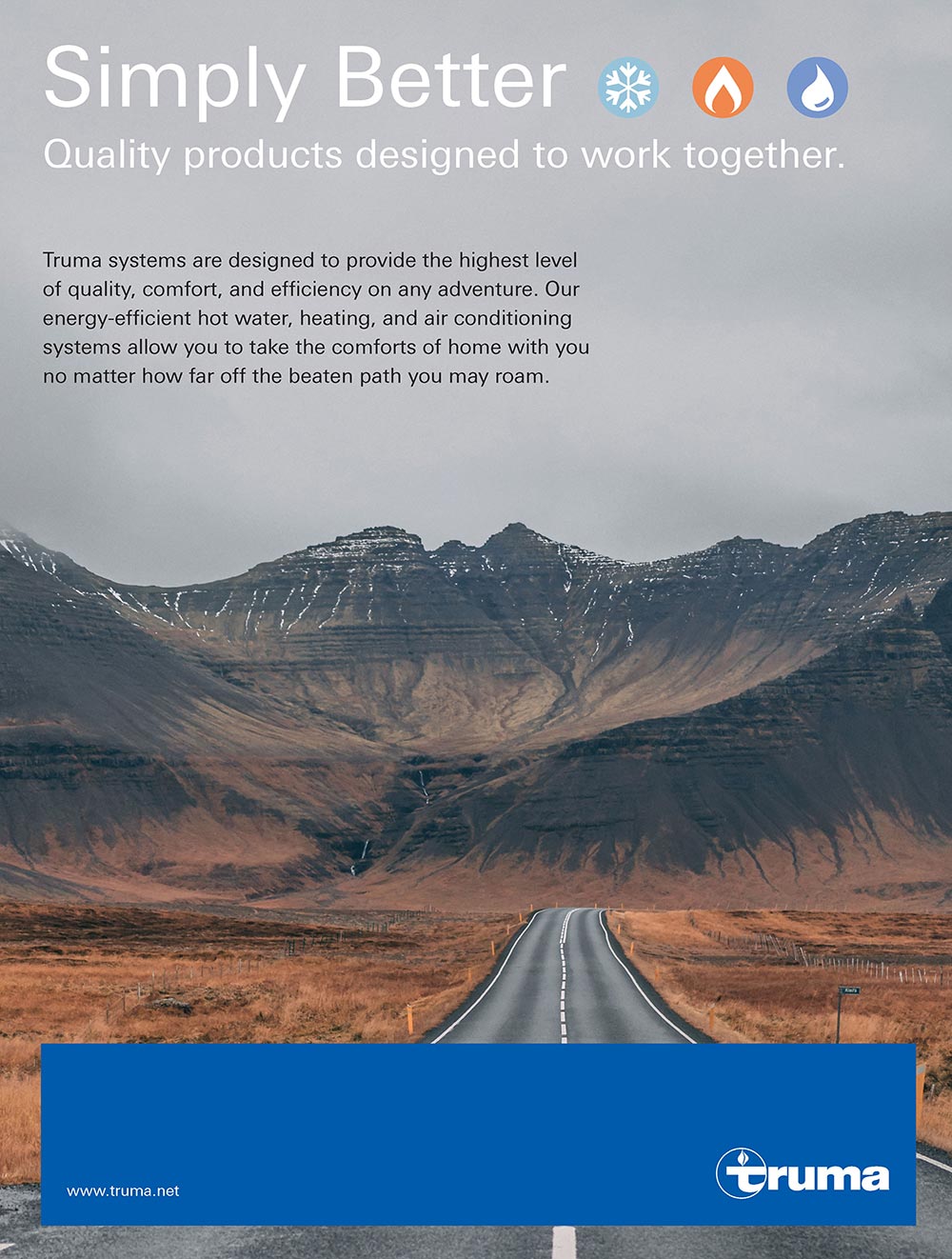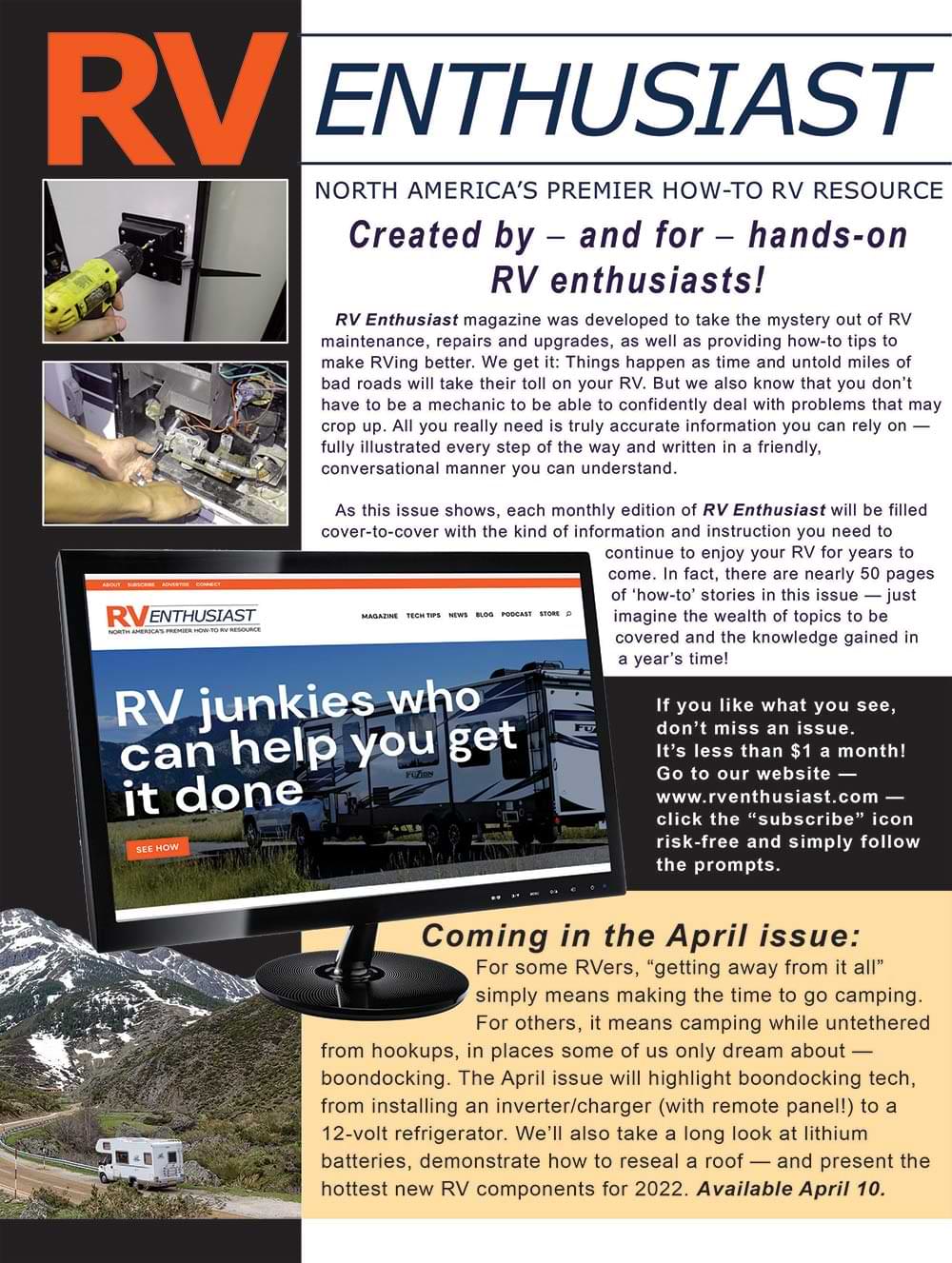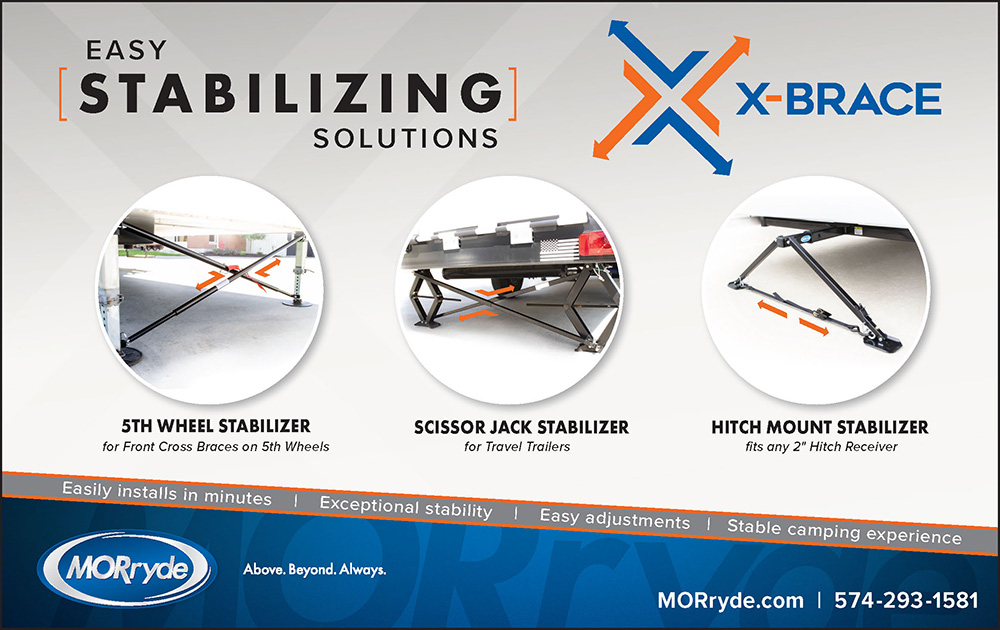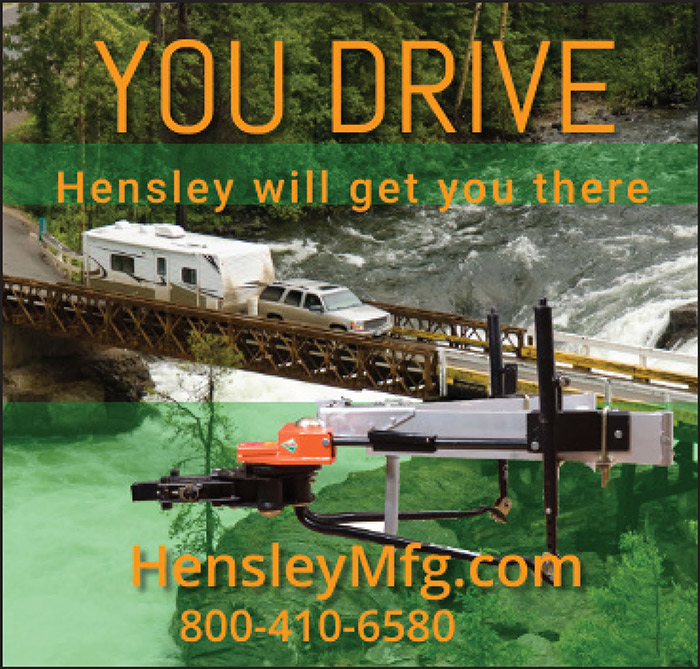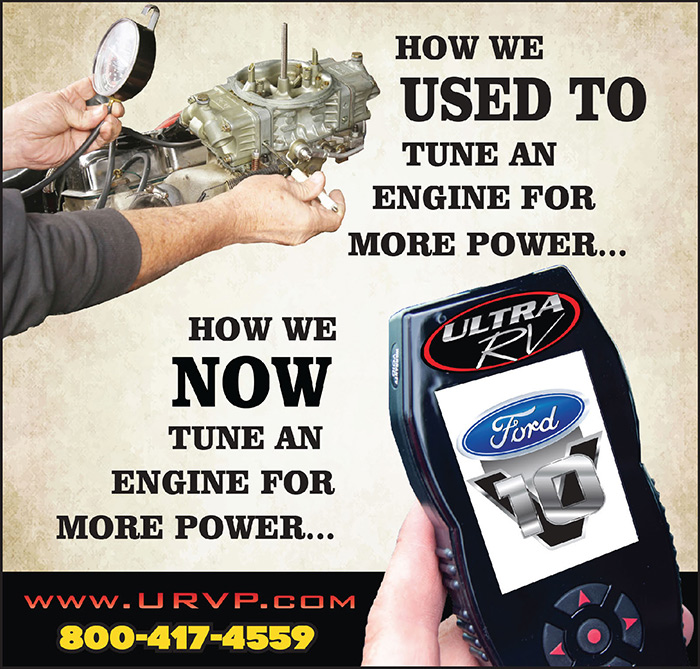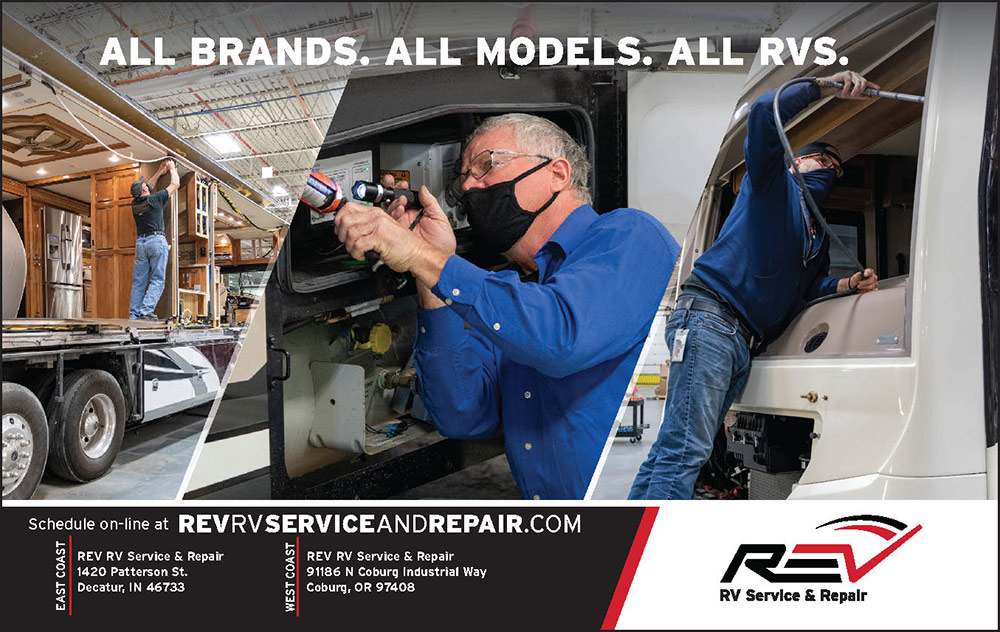Subscriber Access Only
Special Offer
Get 1 year of RV Enthusiast Magazine for just $9.99
Unlock My Offer No ThanksAlready a subscriber? Click here to access full issues.
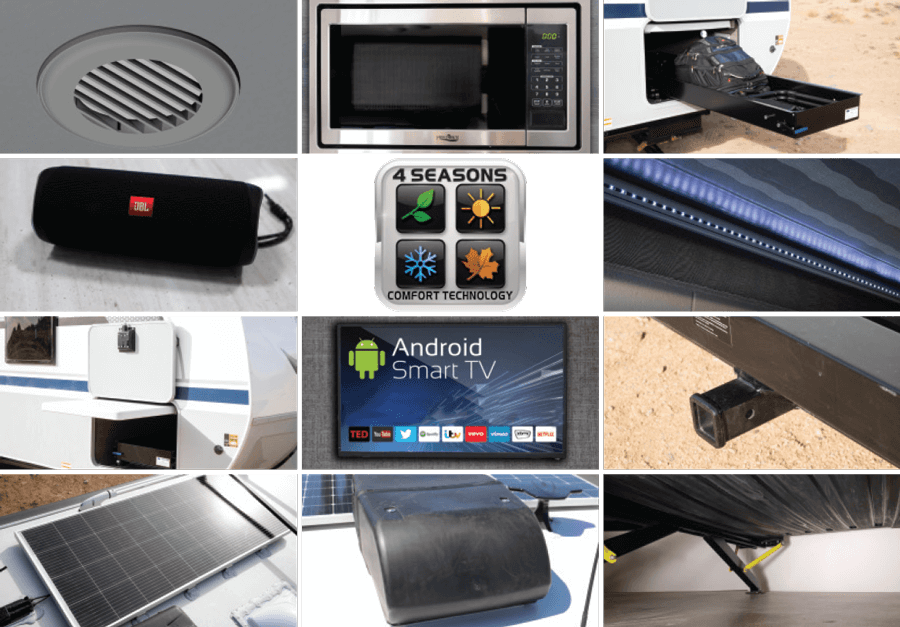











Is there an RV with artificial intelligence (A.I.) in your future? The short answer appears to be “yes.” Jayco’s ‘JayVoice’ — and the anticipated debut of Winegard’s ‘Halo’ system later this year — bring artificial intelligence to the RV arena by turning RVs into ‘smart’ homes. And they won’t always need an uplink to “the cloud” to function.
All the cleaning and buffing in the world won’t prevent vinyl graphics from deteriorating over time — there’s just no stopping the ravages of the sun and weather. That said, you don’t have to live in deteriorating conditions. If your sidewalls are showing their age with dull, cracked or peeling decals, you can restore the shine with computer-generated vinyl.
Keeping an RV’s exterior looking new requires a serious commitment from the owner. Allowing dirt and bugs to bake on the surface leads to a dingy look and accelerates oxidation that dulls fiberglass, metal or painted exteriors. It’s not easy to wash and wax an RV, but there are techniques that will curtail the amount of time and effort needed to get the job done.

(805) 320-6909
[email protected]
EDITOR – Bruce Hampson
(574) 584-4616
[email protected]
TECHNICAL DIRECTOR
BILL GEHR
(805) 340-5015
[email protected]
ART DIRECTOR – MIKE ACCUARDI
[email protected]
26362 Douglas ave., Elkhart, in 46514
 AFFILIATE NOTICE: RVE Media Group LLC provides links to vendors and products, such as an Amazon Associates account, for informational purposes, but that may provide a commission if you purchase from that link. We often label these links with language that provides transparency if the destination is an advertiser, affiliate, or partner. Products are often provided to RVE at little/no cost for editorial testing purposes by vendors/suppliers. Under no circumstances does this affect the results of the test or install as published in RV Enthusiast. Sponsored content is identified as such directly on the content.
AFFILIATE NOTICE: RVE Media Group LLC provides links to vendors and products, such as an Amazon Associates account, for informational purposes, but that may provide a commission if you purchase from that link. We often label these links with language that provides transparency if the destination is an advertiser, affiliate, or partner. Products are often provided to RVE at little/no cost for editorial testing purposes by vendors/suppliers. Under no circumstances does this affect the results of the test or install as published in RV Enthusiast. Sponsored content is identified as such directly on the content.
PRIVACY POLICY: Our complete privacy policy can be found at https://rventhusiast.com/privacy-policy/
f you’ve been sitting on the fence debating the pros-and-cons of owning an RV, chances are you’ve picked up on one big stumbling block to the popularity of the lifestyle blowing up even more than it has during the past year or two: cost. You’d be hard-pressed to miss it. That laminated travel trailer or fith wheel or motorhome you may have been eyeing has doubtlessly increased in price — sometimes dramatically — since the first time you saw it just a few months earlier on a dealer’s lot.
Contrary to what you might have read on social media sites, this has nothing to do with manufacturers or dealers “price gouging” their customers. Such moves would be contrary to an industry riding high and doing everything it can to continue to fuel that passion for the outdoors. Unfortunately, like many businesses today, it’s been swept up in a “perfect storm” of circumstances it has no control over — and we are all learning of the impacts from supply-chain shortages to transporta-tion issues.
It has, truth be told, been keeping a lot of people up late at night in an effort to develop “work-arounds” to keep the RV pipeline flowing.
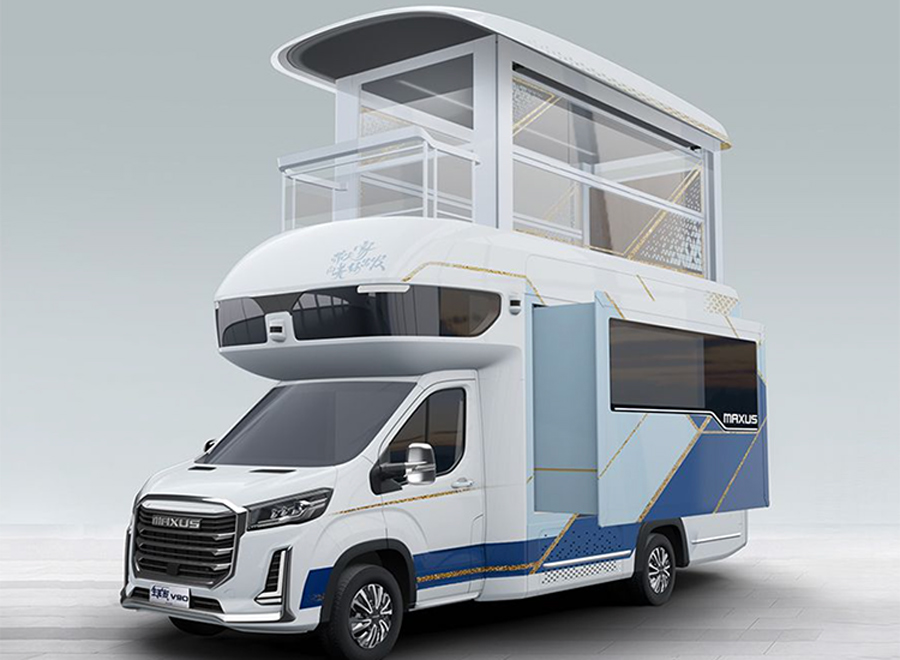
Unfortunately, the SAIC Maxus Life Home V90 Villa Edition is built in China and, should it go into production — at an estimated price of $413,000 — will probably only be offered there.
That said, the ‘Villa Edition’ is filled with technological features that make one wonder why such units aren’t built stateside. Well, beyond the obvious cost factor. Many of its features, from interior and exterior lighting to an integrated power management control center, can be accessed using a smartphone or tablet — or voice commands and hand gestures.
Decals Look Terrible
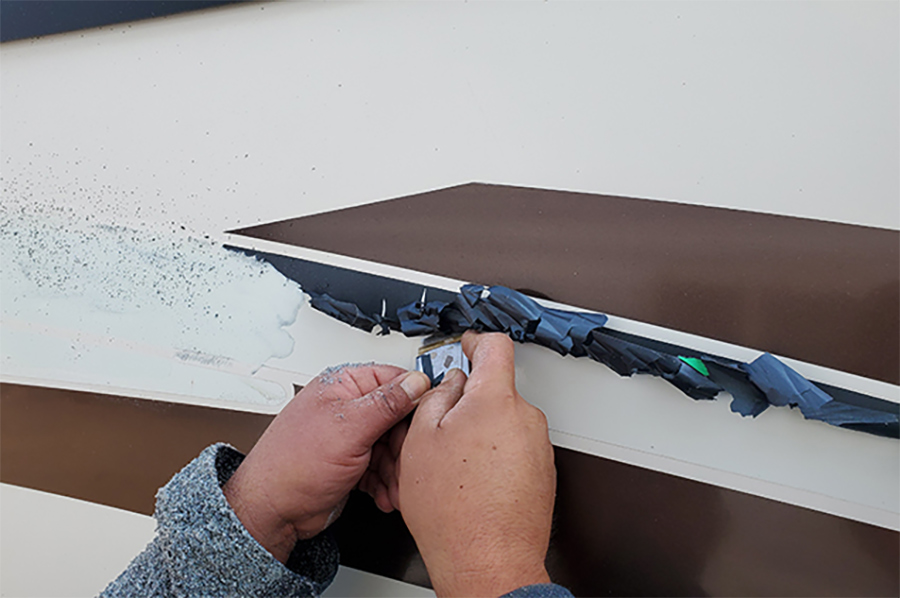
— Rob McCluskey
Rob, don’t feel like the Lone Ranger. Most RV decals start deteriorating within 4-5 years and only get worse from there as the sun’s UV rays have their way with the vinyl material. At this point, 3M, a major manufacturer of vinyl graphics, states that it does not have anything to put on the vinyl pieces to protect against UV rays. You can try Aerospace 303 Protectant, but don’t expect miracles. I’ve had my 2010 Carriage Cameo restriped professionally and it looks nice after the new graphics were applied. The problem is finding a shop in your area that can handle the job, and the process can get expensive because it’s labor-intensive.
A.I. Comes to RVs

nless you’re a computer geek, you’ve probably never heard of “Moore’s Law.” Coined by Gordon Moore way back in 1965, he hypothesized that transistors in an integrated circuit (microchip) — and, hence, technology — doubles about every 18 months. That’s why the homes we live in today — oftentimes controlled by voice-activated artificial intelligence (A.I.) software that lives in “the cloud” and can control many of the house functions you once did manually — are incrementally closer to the lifestyle portrayed in The Jetsons cartoons of our youth than the houses our parents grew up in.
That similar systems are finding their way into RVs isn’t a surprise. The speed at which they are being integrated into the mobile lifestyle is.
At one time, the RV industry was said to be 20 years behind its automotive counterpart when it came to technology, but the Jayco JayVoice — introduced on select 2022 models — comes only a handful of years since embedded voice assistants gained widespread use among auto manufacturers. And Winegard’s Halo system, expected to debut later this year in 2023 models, pushes the envelope even further.

ost owners want to keep their RVs looking nice for as long as possible. To get there, they make sure the exterior is cleaned and waxed on a regular basis. While that helps keep the shine, all the cleaning and buffing in the world won’t prevent vinyl graphics from deteriorating over time. Sure, you can treat the vinyl to regular doses of protectant, but the sun still wreaks havoc with the vinyl material.
That was certainly the case with my Carriage Cameo fifth wheel. In fact, it’s exposed to strong sunshine every day under full-time habitation in the Southwest, a situation that caused the factory-applied decals to fade after just a few years. Originally, the vinyl graphics were replaced by V.I.P. Enterprises in San Bernardino, California, a company that has been restoring the appearance of weathered and used RVs since 1993. The results were beautiful, but continued exposure to the elements caused the replacement vinyl in two colors, dark blue and bronze, to start cracking and discoloring prematurely. Fortunately, V.I.P. Enterprises keeps the artwork for all its projects in a database and was capable of removing the defective pieces of vinyl without damaging the other graphics. It’s not an easy task, considering the good stripes swirl and are within ½-inch of each other in some cases, but it demonstrated the advantage of working with a company that holds on to valuable data and has the necessary expertise.
Clearsource
Lance Camper
Lippert
United States Warranty Corporation
Way Interglobal
Advertise Today


s the unabated popularity of RVing underscores, outdoor enthusiasts across North America have undergone a change of philosophy when it comes to how they opt to spend their tough-earned vacation days. While the pandemic’s impact has ebbed and airlines and cruise ships move towards “business as usual,” the RV industry continues to set high-water marks. Indeed, data-crunching firm Statistical Surveys reported a record number of retail sales for 2021 — 567,079 units — while the RV Industry Association tracked a record 600,240 RVs shipped to dealers across the continent.
Of course, you can’t pull or drive a “home on wheels” across untold miles of oftentimes suspect roads without things shaking and sometimes breaking — an act that’s been described as akin to subjecting a home to a continual earthquake. And when that happens, it becomes apparent that owning an RV isn’t quite the same as a traditional home, where you can pick up the phone and dial a service shop for fast relief when the furnace or water heater goes on the blink. You can — but what you’re apt to discover is that you’ll be going without the comfort such components provide until your scheduled appointment…oftentimes, weeks away.


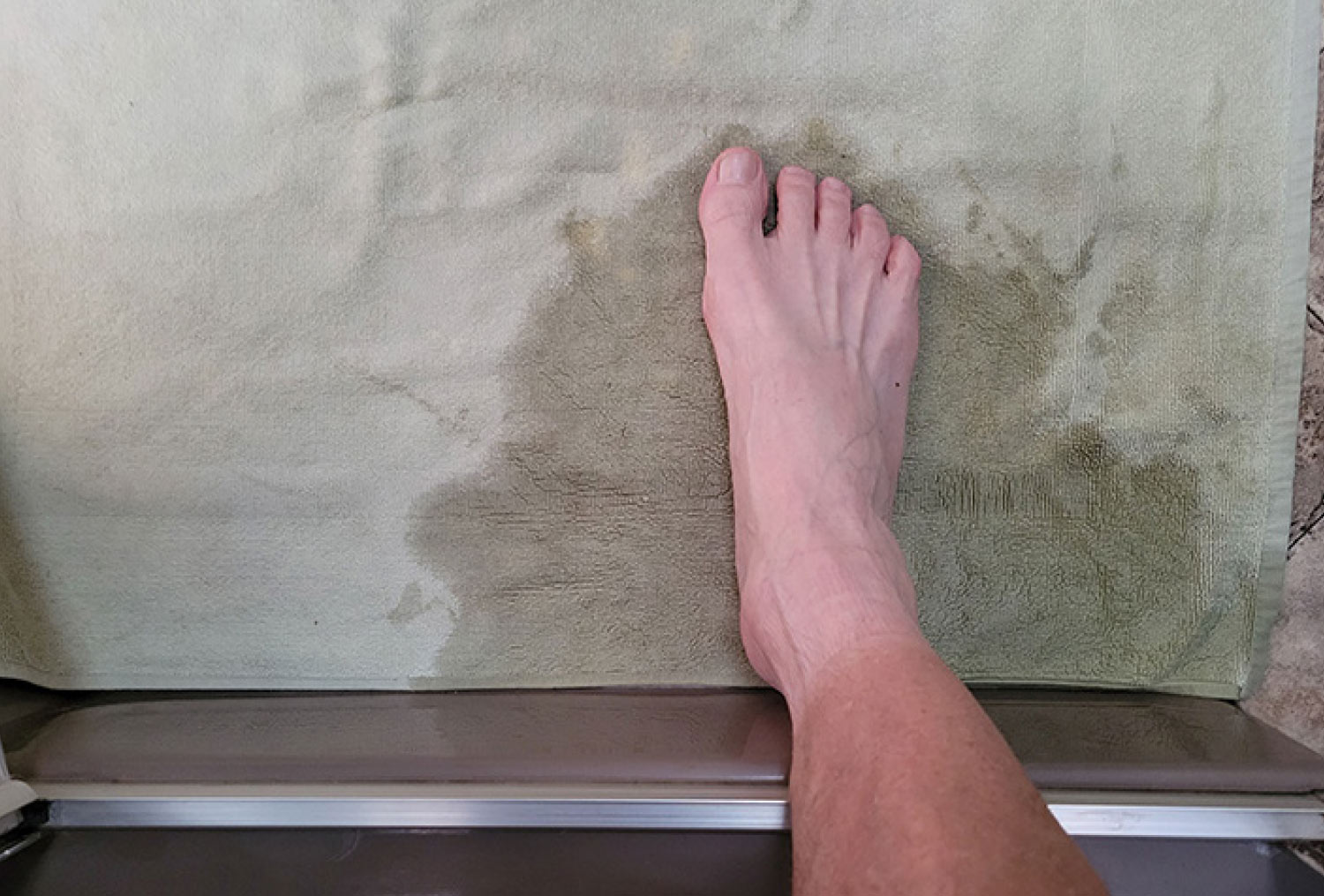
large percentage of RV showers are fitted with a glass door that opens outward in similar fashion to a residential setup, only smaller. Many of these shower doors have a seal on the bottom to prevent the water from running out onto the floor. Unfortunately, these seals don’t last as long as one might expect, falling prey to deterioration that leads to tearing and pieces falling off. This allows the water to escape onto the floor. While it’s possible to put a towel down, doing so is not the most convenient and you end up with a soaked towel or a puddle on the floor, making it hard to dry your feet — much less the damage from water standing on the floor.
Data plates with the shower-door manufacturer name and model number seem to disappear, making it difficult to find replacement parts — and if they are available, good luck finding replacement parts these days. I struggled for years with the problem before finally discovering a simple silicone seal strip made by 3M. It has the company’s venerable adhesive tape laminated to a flexible edge that looked like it would work, so I took a chance and ordered a 26.3-foot, 1 ¼-inch-wide seal strip ($13.59 on Amazon). Length and widths of these rolls of flexible strip are all over the place when you go online, but if you Google “26.3 feet silicone seal strip” you’ll find this exact roll at Amazon.


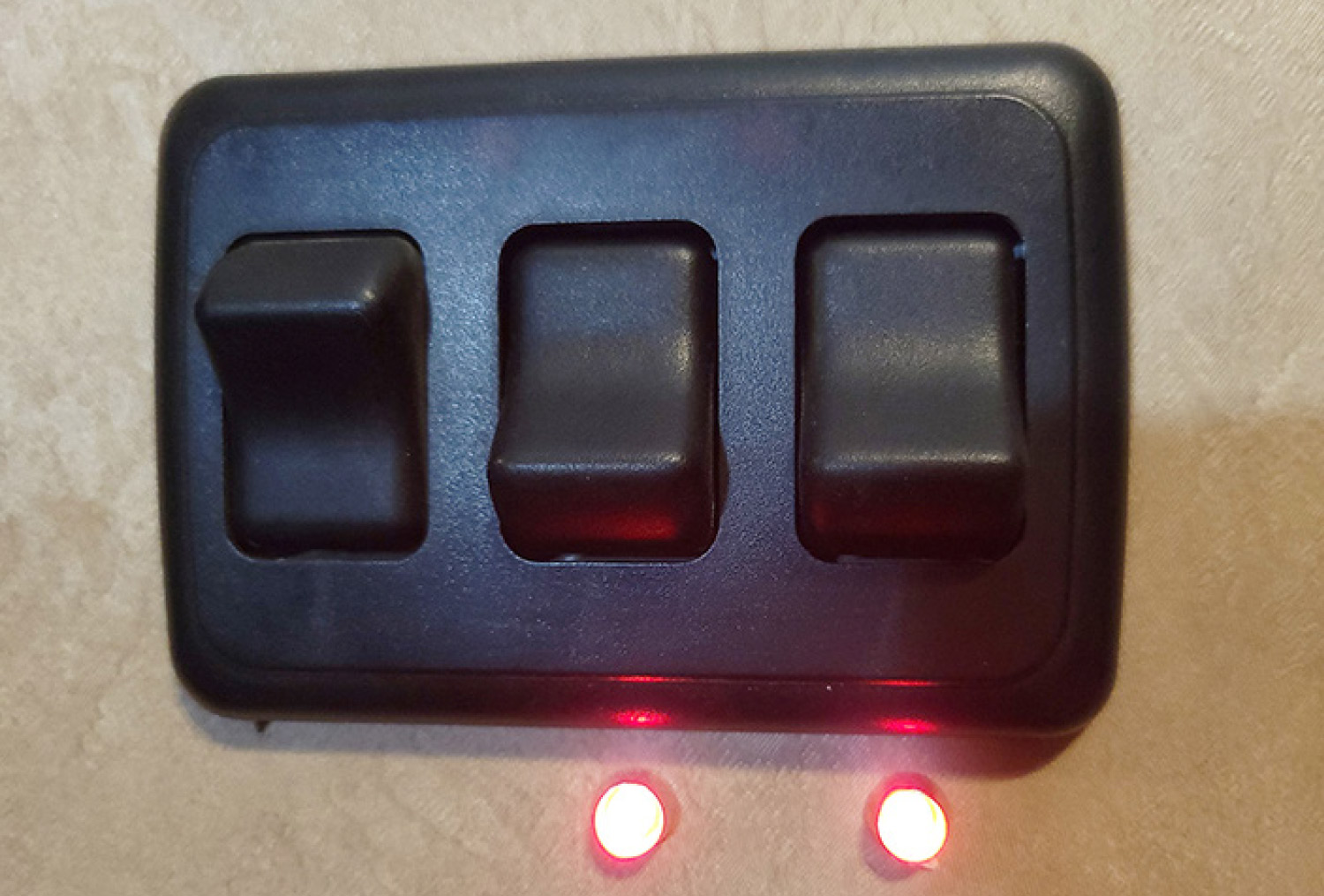
ow many times have you left your RV’s porch light on all night? Those parked next to you know — and probably wish that you would turn the darn thing off! Just walk around the RV park at night and you’ll see porch lights glowing brightly across patios and into their neighbors’ bedroom windows. It’s one of those things that go out of sight (and mind) when the window coverings are drawn and the door is closed. A solution finally dawned on me one morning after my RV’s porch light had been on all night and one of the neighbors complained: Install an indicator light.
Unfortunately, finding a matching switch with a built-in indicator light proved to be a futile process — and changing to another style switch was not in the cards. However, searching online (Amazon) resulted in finding dozens of small red LED lights that could be mounted in a hole just below the porch light switch assembly. I settled on LED 8mm panel-mount lights (https://amzn.to/3sGsSCp) that come in a package of five for just $5.99. These lights are designed to be mounted on a flat surface, whether it be in wood or metal. Each has a backup nut so it could be tightened and not come loose down the road. Two indicators were installed, one for the porch light and the other for the “scare” lights mounted in the corners of the fifth wheel.


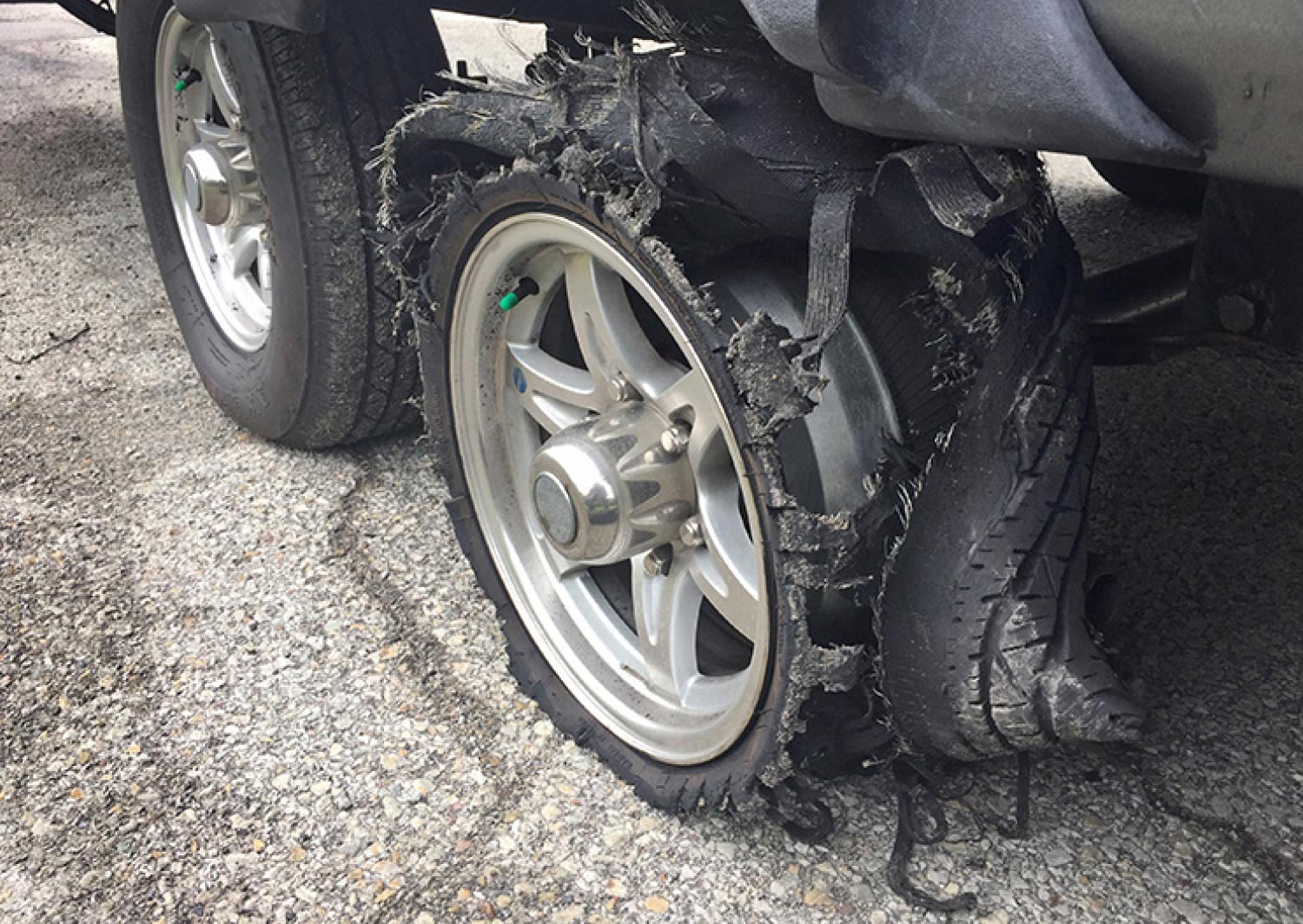
e’re all accustomed to replacing our tires as they wear out — that’s a given. However, RV tires aren’t always run to the point where the tread is nearly gone. Because of the way most outdoor enthusiasts use their RVs — on weekends and for extended trips during warmer weather — our rigs usually spend more time sitting than moving. As a consequence, the tires aren’t impacted by wear-and-tear; they are instead subjected to the sun’s heat and harsh ultraviolet rays.
The end result, however, can be the same: you’re driving down the highway and suffer a premature tire failure.
What happened? Like the asphalt when a vehicle is moving, the sun — and weather — will eventually degrade the tire to the point where it’s unsafe. That’s why most tire manufacturers recommend that RV tires be replaced every six years no matter how much tread is left.


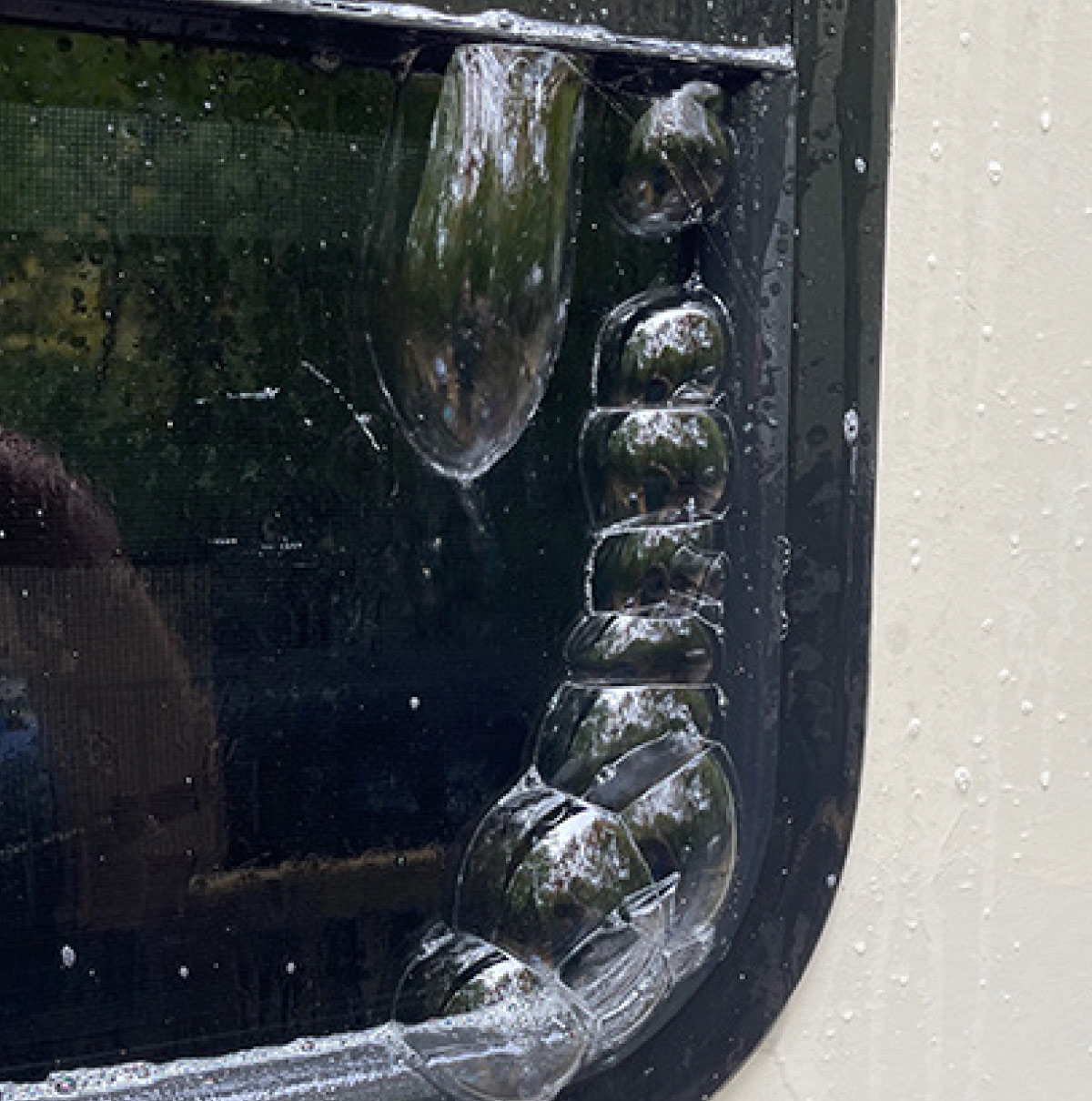
t can be argued that an RV’s greatest enemy is water. RV owners are always deeply disappointed and surprised when they’re told by a service provider that the damage they’re seeing is from a leak, which is not covered by warranty or insurance, and will cost thousands of dollars to repair.
Just about all RV manufacturers limit their liability when it comes to leak damage. Some RVs even have stickers reminding the owner that the roof and body seals must be inspected and maintained at least every 90 days.
If climbing atop the roof of your RV and examining virtually every square inch inside is not how you want to spend an afternoon, one of the easiest ways to find leaks on an RV is with a Sealtech RV leak-testing unit. The compact system pressurizes the interior of the RV body and, with the use of a soapy solution on the exterior, creates bubbles where there are leaks. While no RV is airtight, your service provider can make a judgement call as to extent of the leak and whether it will lead to damage — or if repairs are needed.


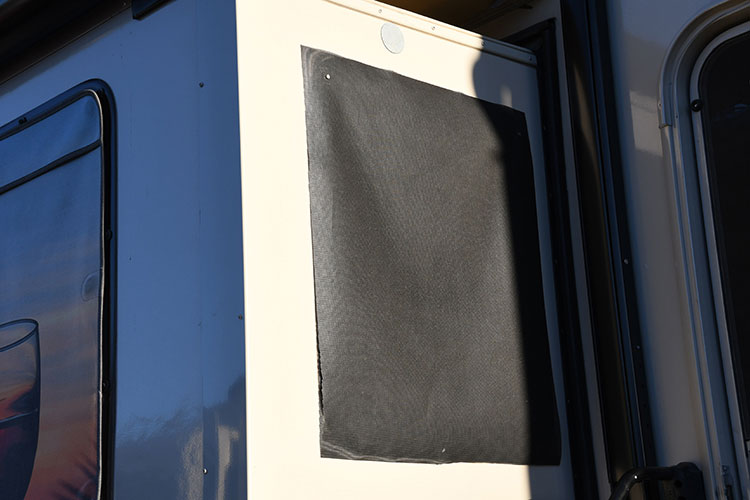
iffusing harsh sun rays — and the resultant heat — that penetrate through RV windows can be a never-ending battle, depending on the position of the rig when parked on a campsite. Sure, you can lower the window coverings, but that blocks any view to the outside and can darken the interior. Making your own sunshades, using over-the-counter materials, is an easy way to control glare and lower interior temperatures while protecting the interior woodwork and upholstery.
The first step is to identify the windows that need to be covered. We seem to be assigned RV sites much too often that have west-facing attitude, so the front window in the patio slideout is blasted with sunshine every afternoon. This window is only 22 x 28 inches, but it allows the sun to heat up the dinette counter and table area, contributing to wood fading and making it difficult to work at the table during the afternoon.


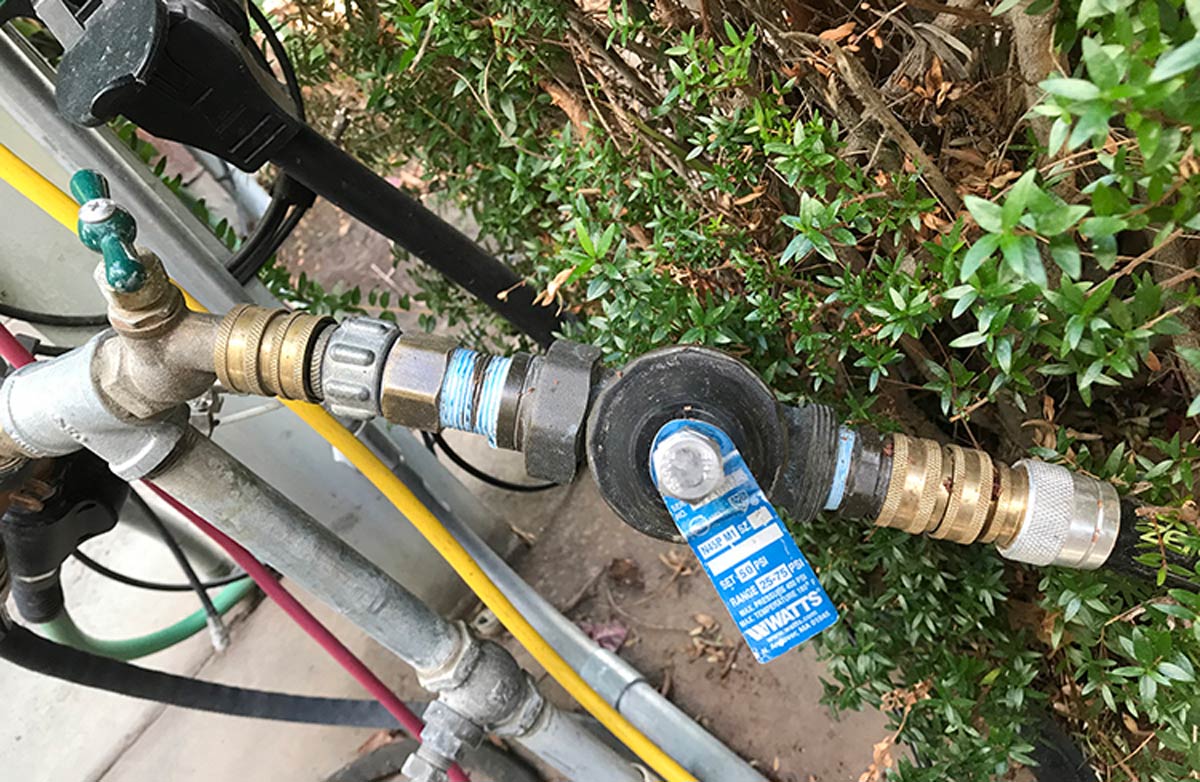
ooking up an RV to city water seems like a simple enough task — just screw on a hose that goes from the faucet to the city water inlet in the RV and you’re done, right?
Well, not so fast.
RV water systems are tested to withstand 80 psi water pressure, but the RV industry requires a reduction in pressure to around 45-50 psi to protect fittings in the network of Pex components, faucets and appliances used in an RV’s plumbing system. Consequently, pressure regulators, commonly available in RV supply stores and online, are installed at the hookup water spigot.


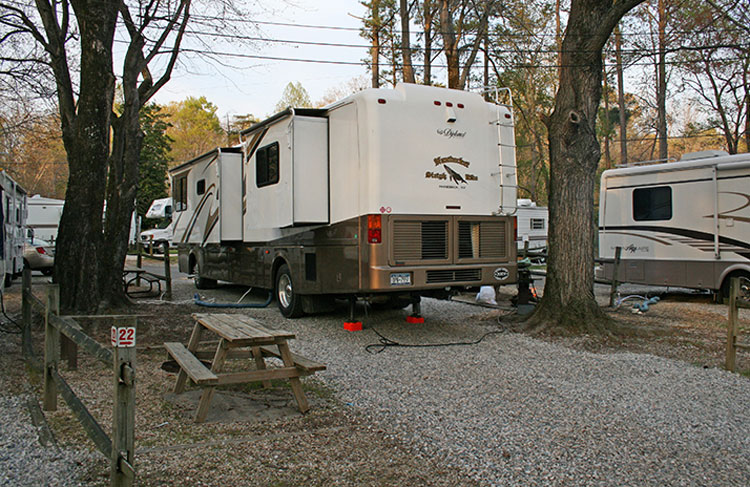
ust about every RV has a slideout — or two, three, four or five these days — which, of course, enhances livability. For the most part, these expanding rooms work without complaint — but when they break, the repairs can be complicated and costly. And, of course, there’s always the aggravation of being stuck somewhere and the frustration of finding a repair shop or mobile mechanic.
To circumvent premature failures, there’s a certain amount of maintenance that is required of the owner — including lubrication, depending on the type of slide-out mechanism. One of the most common types of slideouts is one that uses rack-and-pinion mechanicals. It’s a tried-and-true system that has withstood many years of service. For the most part, other than lubricating the gear pack and arms with teeth cut into the steel (rack), there’s not much the end user can do. Over time, though, these systems tend to develop grunts, grinds and squeals that are annoying — and can lead to other adjustment issues. Proper lubrication will quiet down the mechanism and restore confidence that the system will keep on working as designed.


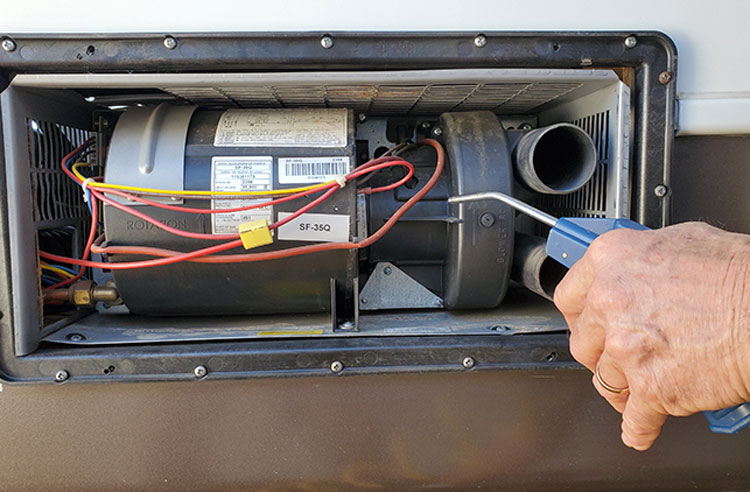
ost motorhomes, trailers and truck campers have some form of comfort heating to maintain interior warmth during cold days and nights. The vast majority of RVs use a forced-air furnace complete with a network of ducting that runs through the floor or cabinetry, terminating with registers to distribute warm air.
Unfortunately, annual furnace maintenance and cleaning are often overlooked, which can lead to poor performance, malfunction and even failure. Annual cleaning is important because the return air system does not include a replaceable filter to prevent dust, lint and pet hair from impacting performance and safety. Following these preventive maintenance procedures will give your heating system the advantage during the cold weather.


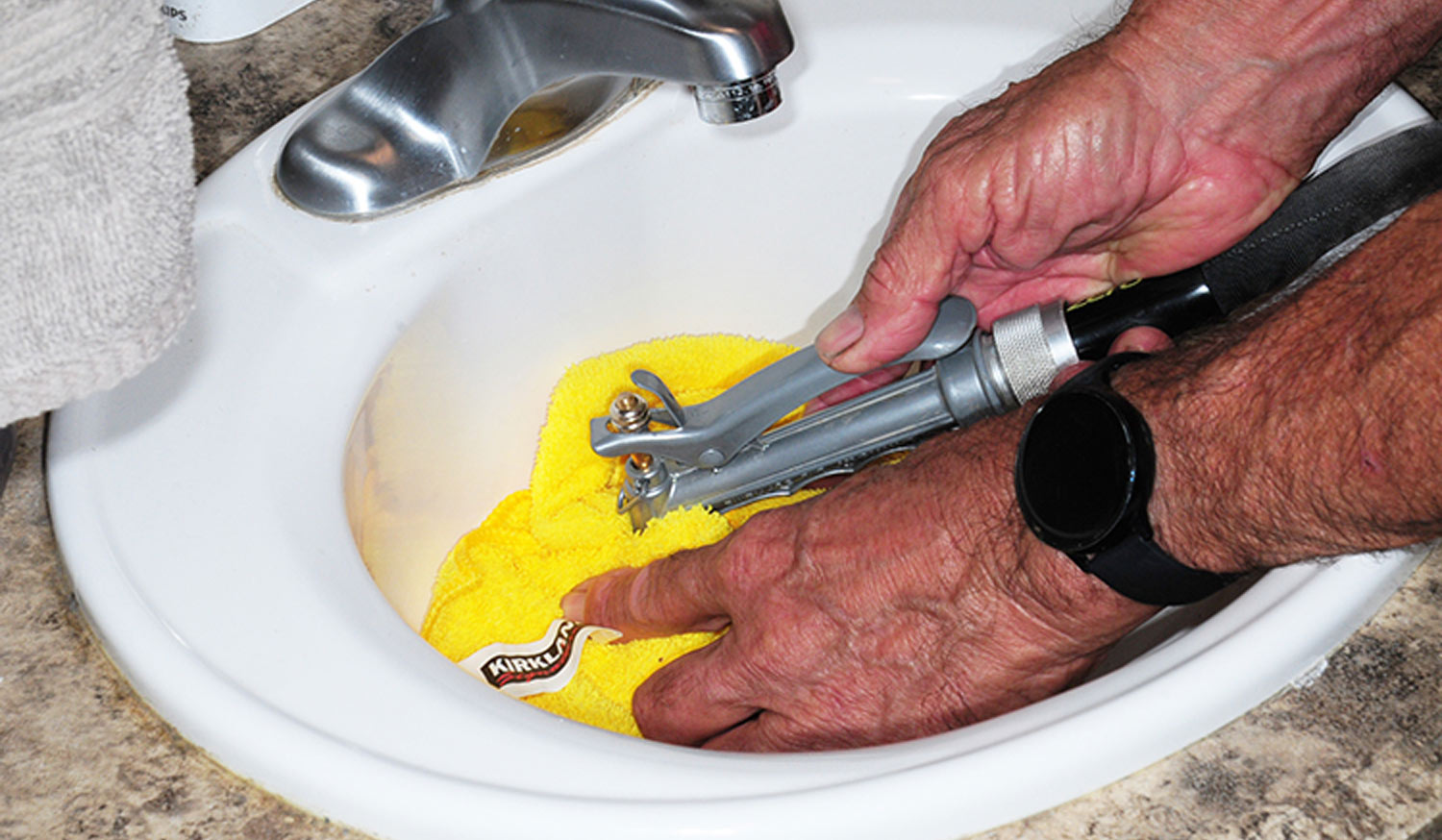
ink and shower drains will plug up over time — it’s a fact of life whether living in a stationary home or RV. Hair, crud from dishes and hands, and other debris, always collects in the drains — usually resulting in a slow flow of water or even a total stoppage. Strainers will capture much of the debris and should be cleaned on a daily basis, but even so, the drain will plug up, oftentimes sooner than expected. You can minimize the frequency for cleaning the drains by using a strainer in each sink and shower; Camco offers a strainer three-pack (No. 42273) for less than $8 on Amazon (https://amzn.to/30rbk1r). It’s also best practice to always wipe off dishes, utensils and pots/pans before washing — and never pour oil from cooking and fish cans (for example) down the drain.
RV owners may be tempted to use a liquid drain cleaner, but such chemicals do not fare well with holding tank chemicals and can impact seals. While it’s possible to use one of those barbed probes to pull out the gooey stuff — a job that is messy and usually stinky — the easiest solution is to simply flush the drains with water. It seems too simple to be true, but it works like a champ.


ogs love to gaze out the lower section of an RV’s screen door when the entry door is open — and when not scanning the outdoors, they also love to lay down against the screen, typically stretching out against the material. More mischievous dogs and cats also enjoy irritating owners by scratching at the material until it rips.
Screen protectors are not new to the RV world, but Lippert’s Screen Defender ($65.97 at Amazon) reinvented the installation process to make it simplicity personified — without the use of any tools, except possibly a tape measure.
The Screen Defender is a metal mesh insert that attaches to the bottom portion of the screen, so long as this area is more than 20 inches high. Don’t get overwhelmed by the seven pages of instructions: The process is exceptionally easy, taking only a few minutes to accomplish.
First, a determination must be made whether the provided extrusions are needed to fill any gap between the center bar of the screen door and bottom of the frame. To establish the need for extrusions, the metal mesh insert is pre-fit on the screen and any visible gap is measured. We had to put two extrusions together to make a 2-inch gap filler. This is done by sorting through the provided extrusions and finding the right combination. For this project, two pieces were pressed together, setting the barbs that are used as fasteners.


ogs love to gaze out the lower section of an RV’s screen door when the entry door is open — and when not scanning the outdoors, they also love to lay down against the screen, typically stretching out against the material. More mischievous dogs and cats also enjoy irritating owners by scratching at the material until it rips.
Screen protectors are not new to the RV world, but Lippert’s Screen Defender ($65.97 at Amazon) reinvented the installation process to make it simplicity personified — without the use of any tools, except possibly a tape measure.
The Screen Defender is a metal mesh insert that attaches to the bottom portion of the screen, so long as this area is more than 20 inches high. Don’t get overwhelmed by the seven pages of instructions: The process is exceptionally easy, taking only a few minutes to accomplish.
First, a determination must be made whether the provided extrusions are needed to fill any gap between the center bar of the screen door and bottom of the frame. To establish the need for extrusions, the metal mesh insert is pre-fit on the screen and any visible gap is measured. We had to put two extrusions together to make a 2-inch gap filler. This is done by sorting through the provided extrusions and finding the right combination. For this project, two pieces were pressed together, setting the barbs that are used as fasteners.


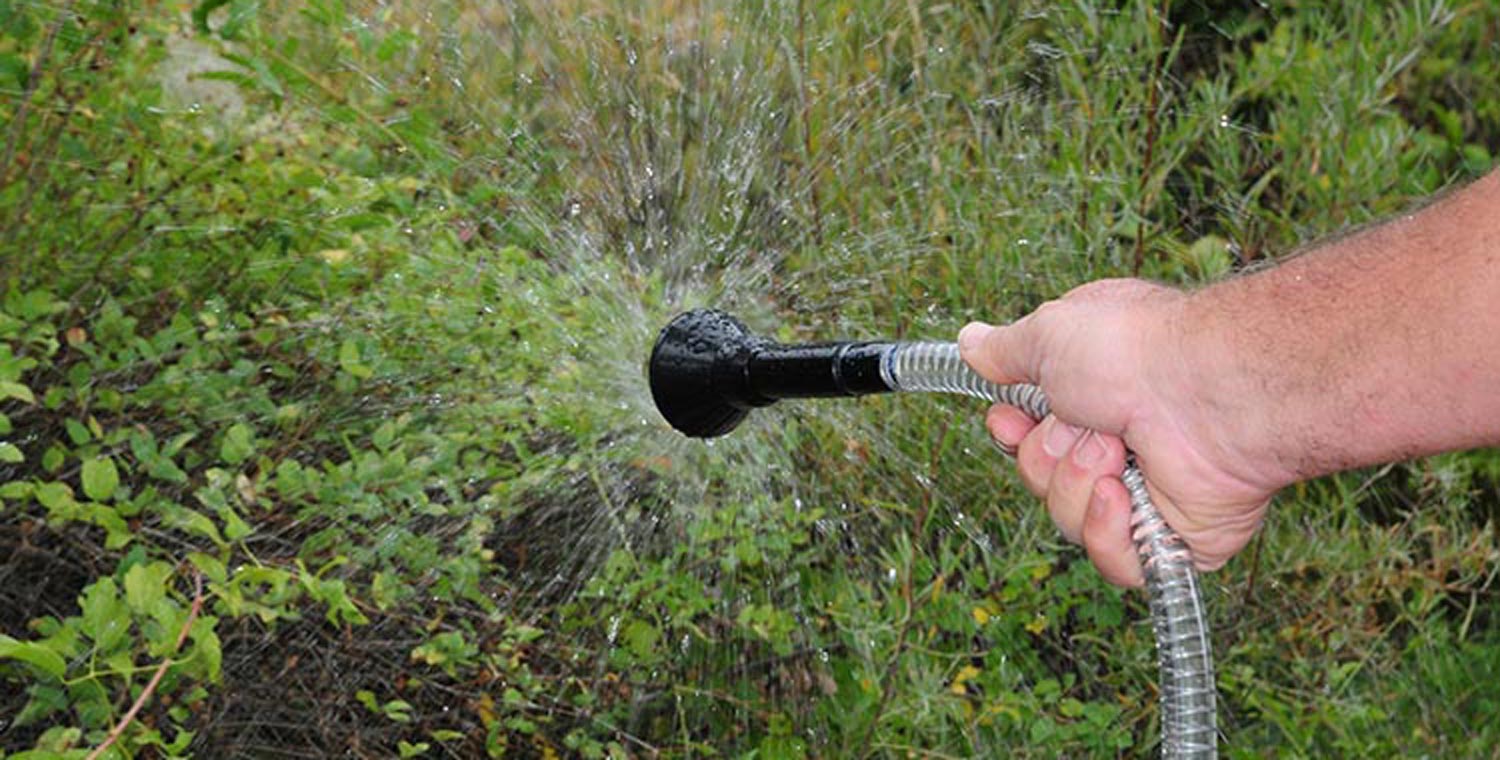
umping a black holding tank is not rocket science, but it does conjure up fears of getting that nasty stuff on your hands or ground — which plays right into the best campfire stories. There are a number of techniques on how to clean these tanks circulating on the Internet, but one thing is for sure: preventing the dreaded “poo pyramid” inside the tank is crucial to a free-flowing system and odor control. The RV Flexible Swivel Stik from Camco is a must-have accessory to carry in your tool arsenal that will help keep black tanks clean.
Many black holding tanks these days are fitted with a built-in flusher, which should be used every time the tank is emptied. These systems use a spray nozzle, usually mounted to the side of the tank, and are connected to a hose that forces water through a rotating nozzle inside the tank. But while the tank flusher gets much of the contents to flow out the dump hose, there are times when it’s just not powerful enough to thoroughly clean the tank — and owners of RVs built without this feature can find themselves in an even more precarious situation.


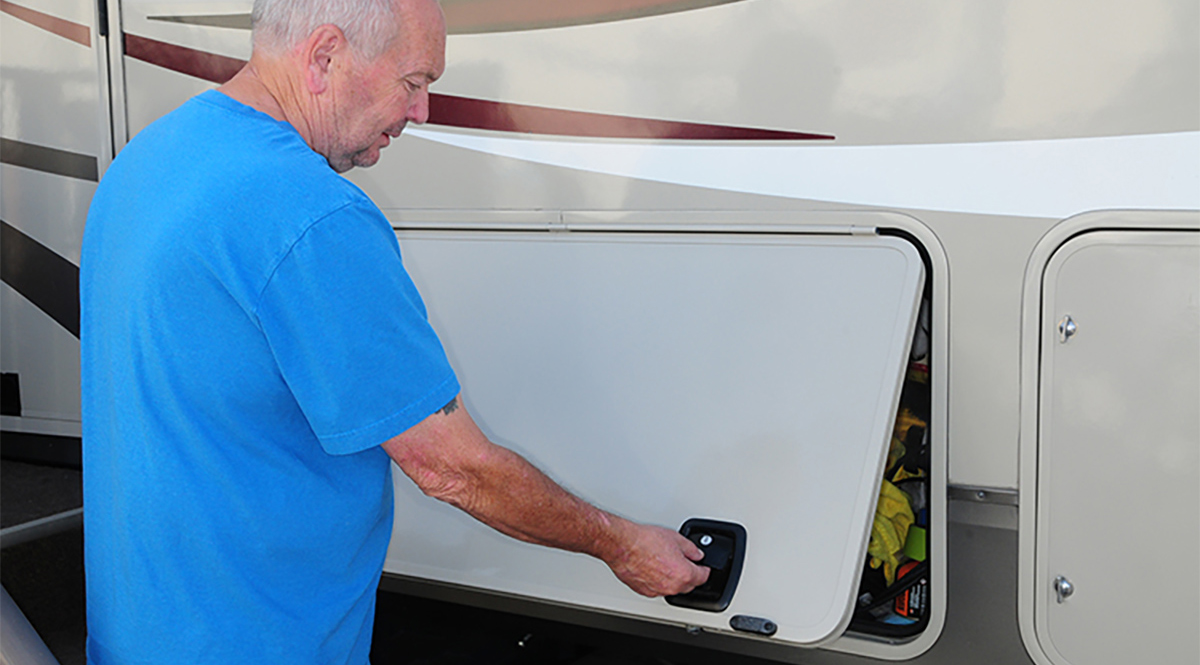
ust about everyone who has owned an RV for long has experienced issues with latches on their compartment and entry doors. Exposure to the outdoor elements — and, of course, repetitive use — can create “sticky” situations whereby the doors won’t close properly without a lot of prodding…and we all know that can lead to latch and door damage. Fortunately, the fix is about as simple as it gets — but it’s important to use the right lubricants.
Most people reach for WD-40 (or a similar product) for toning down squeaks and smoothing out friction between metal parts like a bolt and strike plate, but lubricants like this can attract dirt and dust and can be on the messy side.
Fortunately, there are a number of products for this purpose, including a silicone-based liquid or gel or even a dry lube, which will restore function while resisting a build-up of crud. Sil-Glyde Multipurpose Lubricant (https://amzn.to/3H47n2w) is a gel that can be applied easily to the bolt and strike plate, which instantly restores smooth action. This lubricant “sticks” to the metal parts without running down the sides and creating a need to clean up the surrounding area while providing necessary lubrication for a fairly long time (depending on the elements); we usually reapply on a monthly basis.



erhaps one of the most overlooked maintenance procedures is flushing the water heater and replacing the anode rod. Inspecting the anode rod seems like an out-of-sight, out-of-mind proposition — except for those who have to pull it to drain the tank for winterizing. Flushing the sediment that builds up in the bottom of the tank on regular basis — regardless of whether you have an Atwood or Suburban water heater — may not be quite as important as servicing the anode rod (Suburban models), but over time it’s possible to lose significant capacity, much less damage the tank.
Atwood tanks and the drain-plug threads are made of aluminum and using an aftermarket anode rod is not recommended. Don’t get fooled by those who tout their use; they can literally weld themselves into the drain hole from the electrolysis between the steel and the aluminum. Suburban water heaters have a porcelain-coated steel tank, which requires the use of an anode rod to protect against deterioration of the steel. The rule of thumb is to replace the anode when it’s about 50% deteriorated or annually, whichever occurs first.


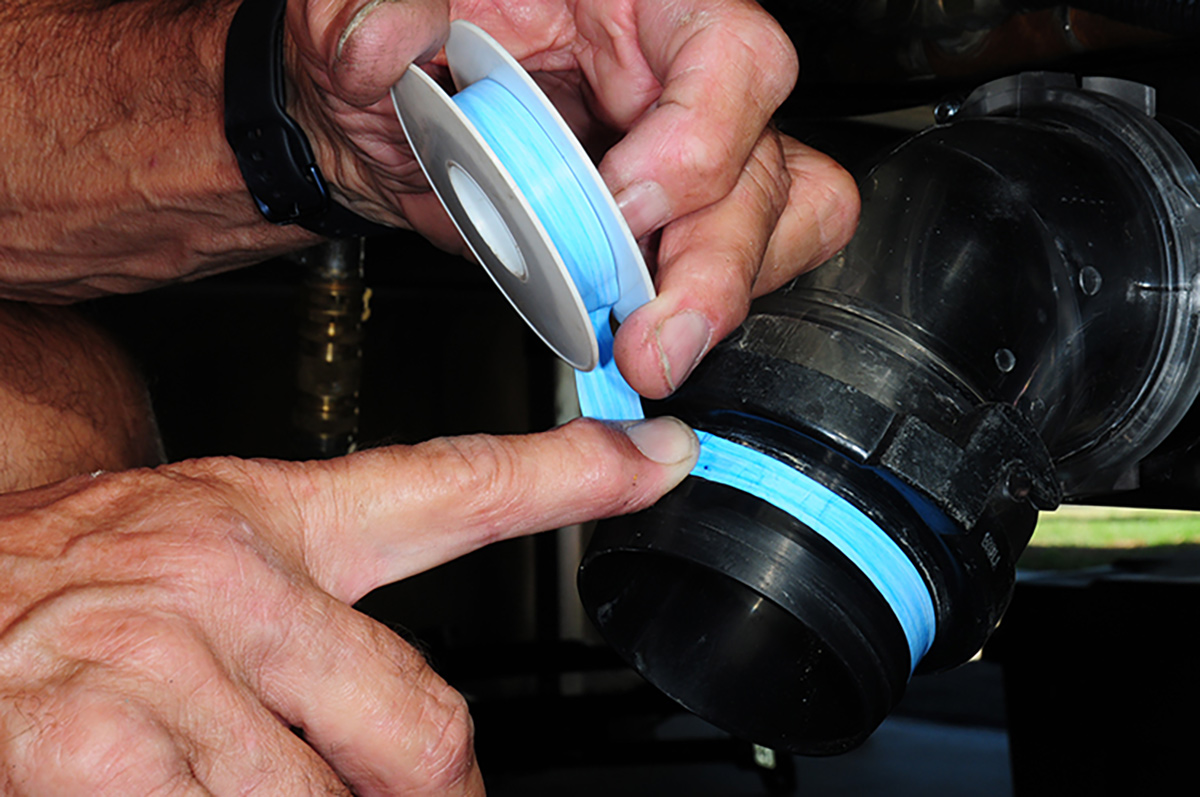
here’s probably nothing messier and more embarrassing than watching in horror as the sewer hose pops off the termination pipe connector (bayonet fitting) — or leaks — while dumping the tanks. Unfortunately, it happens all the time, usually caused by a hose clamp that has rusted and released. Many owners go by the “tighter is better” philosophy when turning the worm-screw drive on the hose clamp, overtightening to a point where the mechanism becomes distorted, rendering the clamp unreliable after a short while. And let’s not overlook the poor quality of these hose clamps.
A simple solution is to wrap Teflon tape around the RV termination pipe connector and the fitting on the dump-station drainpipe end before sliding on the hose and tightening the clamps. You should make several full wraps around the fitting, stretching the Teflon tape at the same time to assure it will “stick” to itself. It may take some finesse to get the hose to clear the Teflon tape and prevent bunching up next to the collar. Once the hose is in place, the clamp can be positioned and tightened moderately, without deforming the screw-drive mechanism. While it’s also possible to seal the hose to the fittings with silicone sealant, doing so requires scraping and annoying clean up when refreshing the connection.
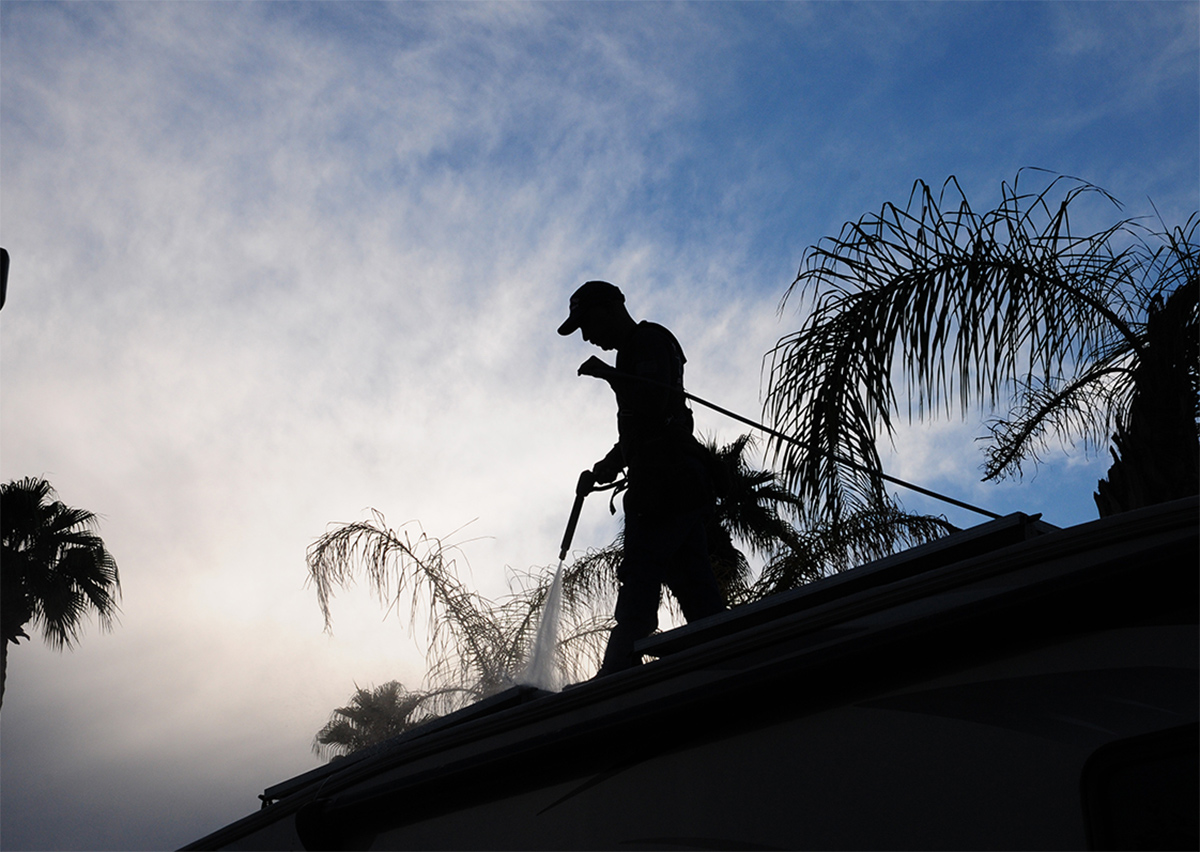
eeping an RV’s exterior looking new requires a serious commitment from the owner. RVs have rightly been referred to as “homes on wheels” — but you never had to concern yourself with bugs hitting the front of your brick-and-mortar home at 60 miles an hour. Allowing dirt and bugs to bake on the surface leads to a dingy look — and, in many cases, accelerates oxidation that leads to a dull fiberglass, metal or painted exterior.
It’s not easy to wash and wax an RV, but there are techniques that will curtail the amount of time and effort needed to get the job done. Professional detailers always have a few secrets up their sleeves, and after watching the process of having our fifth wheel detailed multiple times, I came away with a bunch of “why didn’t I think of that” ideas to add to my arsenal of tried-and-true products.

f you love a good story, consider putting Jonesborough, Tennessee, on your list of places to visit. Jonesborough is not only Tennessee’s oldest town, but it is “the Storytelling Capital of the World.” Tucked away in the Appalachian Mountains in the northeastern corner of the state, the town sits between the Watauga and the Nolichucky Rivers and is surrounded by low hills and elongated ridges. Famous frontiersmen Daniel Boone and Davy Crockett once explored and hunted this land, and have become a part of Jonesborough’s history and culture.
At the time that Jonesborough was established as a town in 1779, the land belonged to North Carolina. A few years earlier, Daniel Boone mapped out a trail from Virginia across the Appalachian Mountains through the Cumberland Gap, allowing for expansion of new settlements in the area. By 1784, the settlers wished to pull away from North Carolina and establish a new state known as Franklin. Franklin actually functioned as the nation’s 14th state over a four-year period, but was never recognized by Congress; residents nowadays often refer to it as “the Lost State of Franklin.” In 1796, Tennessee became the nation’s 16th state, and Jonesborough became known as the oldest town in Tennessee.





